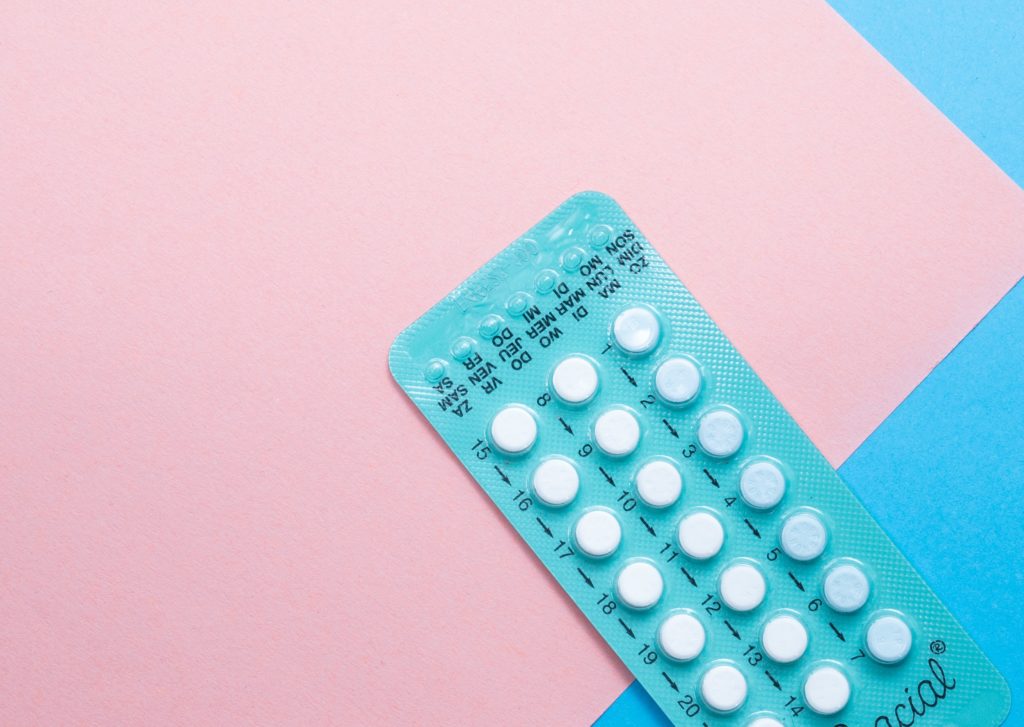
Hormone imbalances often begin at a very young age. As we grow from girls into women, we get to know our hormones quickly. Or at least the symptoms that come from them! I remember as a teen girl experiencing menstrual cramps, PMS, acne, the whole gamut. I know I’m not alone. At the time of course so many other girls and women around me experienced similar things that I just thought it came with the territory.
It wasn’t until much later when I quit hormonal birth control in my late 20s that I started to really understand my cycle. I learned to chart my cycles and gain some understanding of what my symptoms meant. This allowed me to listen to my body with more compassion and find ways that I can help it instead of fighting it.
Why we need hormones.
It is important to know that, although hormones get a bad rap, they are 100% necessary for our bodies and in many ways are vastly beneficial to our well-being. Hormones play a major role in brain health, heart health, bone health, mood regulation, blood sugar regulation, mineral balance, metabolic function, and so much more! When it comes to our sex hormones (namely, estrogen, progesterone, and testosterone), each one of these is necessary for a healthy menstrual cycle and for our fertility. But they also bring us many benefits besides just reproductive function. So let’s send some love to our hormones already!
Benefits of the sex hormones
Let’s start with estrogen.
This is the hormone most active at the beginning of our cycles during the follicular phase (Day 1 through ovulation). Estrogen stimulates the growth of the ovarian follicles as well as the endometrium, which is that cushy lining within the uterus that prepares for an embryo to implant each month. It also stimulates the fertile-quality cervical mucus that allows the sperm to reach the egg for fertilization. In addition to this, estrogen has anti-inflammatory properties, promotes quality sleep, increases insulin sensitivity, improves glucose metabolism and helps maintain healthy weight management, supports bone health and heart health, regulates cholesterol, and even promotes healthy aging of the skin (couldn’t we all use that!). It also affects the health of our brains and our moods (mood swings sound familiar, anyone?)
In the luteal phase of our cycles (from ovulation until the next cycle begins), progesterone is queen.
Progesterone is another highly underrated, but crucial hormone. It helps to protect the endometrial lining that was built up during the follicular phase and also opposes and balances out estrogen to protect against estrogen excess, which can be a contributing factor to uncomfortable symptoms as well as endometrial and breast cancer. Progesterone also supports brain health including cognitive function, helps with modulating stress, mood, and sleep, and also stimulates thyroid hormone production which in turn helps to improve the clearance of cholesterol and estrogen through the liver. I may be a bit of a nerd over here, but I think that is pretty amazing!
Then we move on to testosterone.
Testosterone is of course typically thought of as a male hormone, but women do produce a smaller amount of testosterone as well. It helps estrogen with the development of follicles for ovulation and also helps with mood and energy and promotes the development of muscle mass and bone health. And another fun fact for the day: all estrogen is actually produced from the conversion of androgens like testosterone.
That sounds great! What about when those hormones are out of balance?
I’m so glad you asked! To benefit from all of these wonderful effects of the hormones, we must take a look at our hormone imbalances and where they might be coming from.
We will begin our journey again with estrogen.
There are actually two types of estrogen imbalance that both involve too much estrogen and are often confused. The first is excess estrogen which means there is too much estrogen in the system. This can be due to a poor elimination of estrogen through the liver and/or exposure to xenoestrogens which are a category of endocrine disruptors found in many food preservatives, personal care products, pesticides, and so much more. It can also be influenced by excess alcohol consumption, drug or toxin exposure, obesity, and insulin resistance.
Then we have estrogen dominance, which refers to having too much estrogen in ratio to progesterone. Symptoms of estrogen excess and dominance are very similar and can include heavy and/or painful periods, breast tenderness, bloating, water retention, menstrual migraines, ovulatory pain, PMS, fibroids, cysts, endometriosis, and adenomyosis.
It is also possible to have the opposite problem of having low estrogen. This is commonly thought of a symptom of menopause, but can occur at any age. Stress is often a big factor here because cortisol takes priority over estrogen production. Other factors that can be at play include hormonal birth control, disordered eating, nutrient deficiencies, and a low fat or low cholesterol diet. Symptoms are opposite of high estrogen and include cycle irregularities or no periods (amenorrhea), low sex drive, vaginal dryness, hot flashes, joint pain, dry skin and eyes, cellulite formation, depression, and poor memory. This is also common in PCOS.
And now back to progesterone.
Low progesterone is another of the very common hormonal imbalances. Ovulatory issues or poor corpus luteum development can be contributing factors as well as hormonal birth control, inflammation, and stress. Just like with estrogen, cortisol takes priority over progesterone production under high stress. Symptoms of low progesterone include difficulty conceiving or staying pregnant, PMS, short luteal phase (less than 10 days between ovulation and menstruation), premenstrual spotting, menstrual migraines, breast tenderness, depression, anxiety, fatigue, and brain fog.
Finally we come back to androgens like testosterone.
Common symptoms include hair growth on the face or body, male pattern balding, acne, and a deepening voice. High androgens can be caused by adrenal issues, high blood sugar, high insulin, high cortisol (hello again stress!), excess body fat, and PCOS.
Again, the opposite is also possible. Symptoms here can include low sex drive, painful intercourse/lack of lubrication, lower muscle mass, and lack of motivation and self confidence. Low androgens can be caused by adrenal dysfunction, low ovarian function, removal of the ovaries, hormonal birth control, and nutrient deficiencies. Remember that note earlier about how estrogen is produced from conversion of androgens? Well that means that low androgens can lead to lower estrogen levels as well!
Being an endo warrior myself I have experienced most of these imbalances at some point or another due to my own internal imbalances or medications I was taking so if you find yourself in the middle of this storm at the moment, I hear you! You can read more about my personal experience here.
Where does all this come from?
Again, so glad you asked because this is where my work as a nutritional therapy practitioner really comes into play and is also what really lights me up when it comes to helping my clients with hormone imbalances. There is no one size fits all answer here, but in fact there can be many factors at play and in my sessions with clients I spend a lot of time digging deep to pinpoint what could be the root cause for each individual.
I would like to hit home one more time here on the impacts of stress on your body. Constant high stress creates a cascade of symptoms in the body and without managing that stress effectively any other work will not be able to move the needle towards health nearly as powerfully. Stress management is key.
Some other contributing factors can be systemic inflammation, nutrient deficiencies, blood sugar imbalance, poor liver detox, gut inflammation and dysbiosis (imbalance of gut bacteria), exposure to endocrine disrupting chemicals like the xenoestrogens mentioned earlier, hormonal birth control, NSAIDS, and other pharmaceuticals.

Hormone imbalances are the symptom, NOT the problem
If there is one nugget of knowledge that you take away from reading this article, let it be that hormone imbalances are a symptom, they are NOT the root problem. Therefore throwing synthetic hormones at it will still not get to the root of why there is an imbalance in the first place. If you are experiencing any of the symptoms listed above, I encourage you to find an experienced practitioner who will look at you as an individual, as a whole person, and will work from a functional root cause perspective.
I wish you all the best in your hormone healing journey! I am here to support you in any way you need.
Looking for a place to start on your own journey towards health right now, today? I would love to hear from you. Click here to schedule a FREE 15 minute discovery call so you can share your story and I can answer any questions. Or subscribe to my blog below and be the first to know when there is something new to read!
References:
Functional Women’s Academy. (2022). Module 1.4 Transcripts [PDF Document]. Retrieved from: www.functionalwomensacademy.com
Granchi, Carlotta; Minutolo, Filippo; and Paterni, Ilaria. (2018). Risks and benefits related to alimentary exposure to xenoestrogens. Crit Rev Food Sci. Nutr. 2017 57(16), 3384-3404. Retrieved from: https://www.ncbi.nlm.nih.gov/pmc/articles/PMC6104637/

